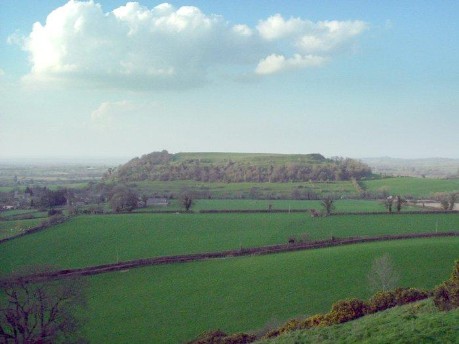
Cadbury Castle is possibly the best supported location for Camelot. It consists of an Iron Age hill fort, built around 400 BC. The fortress was improved and refortified five times over the centuries, until it was occupied by the Romans around AD 50. The fortress was destroyed at least once by fire, possibly when it was taken by the Romans. According to Michael Havinden, the Durotriges and Dobunni used the fortress in their resistance against the Legio II Augusta (Second Augustan Legion) under the future emperor Vespasian.
After the withdrawal of the Roman legions around 410, the site seems to have been used until after 580. Leslie Alcock excavated the site in the late 60s, and uncovered a "Great Hall" and evidence that the innermost defenses were refortified, creating a fortress twice as large as any other known fort from the same time. Shards of pottery from the eastern Mediterranean, of the type known as Tintagel pottery after the place they were first found at, were also found. This evidence seems to show that Cadbury Castle was the main palace of a major post-Roman Briton king and his family, teulu (band of faithful followers), servants, and horses.
According to John Leland, a famous 16th century antiquary, the site was held by the locals to be King Arthur's Camelot. The name Camelot would fit to the site, as the River Cam is close, as well as the villages of West Camel and Queen Camel. The name Cadbury seems to be a Saxon-Briton hybrid meaning "Battle-Fort", which would also be applicable to Camelot, although it should be noted that it would fit nearly every other fortification in the world as well. The location of Cadbury Castle also makes sense; it was a strategic location, on the eastern frontier of Dumnonia, the kingdom that ruled the area in post-Roman Britain. If Arthur was, as the legends claim, a Dumnonian prince born at Tintagel, then Cadbury Castle would again make sense, being in a good defensive position against invasions from the rest of Britain. The problem with Cadbury Castle is that the proof does not point directly to Arthur. Nothing with his name on it was found, although it has been shown that the right sort of person was living there at the right time.